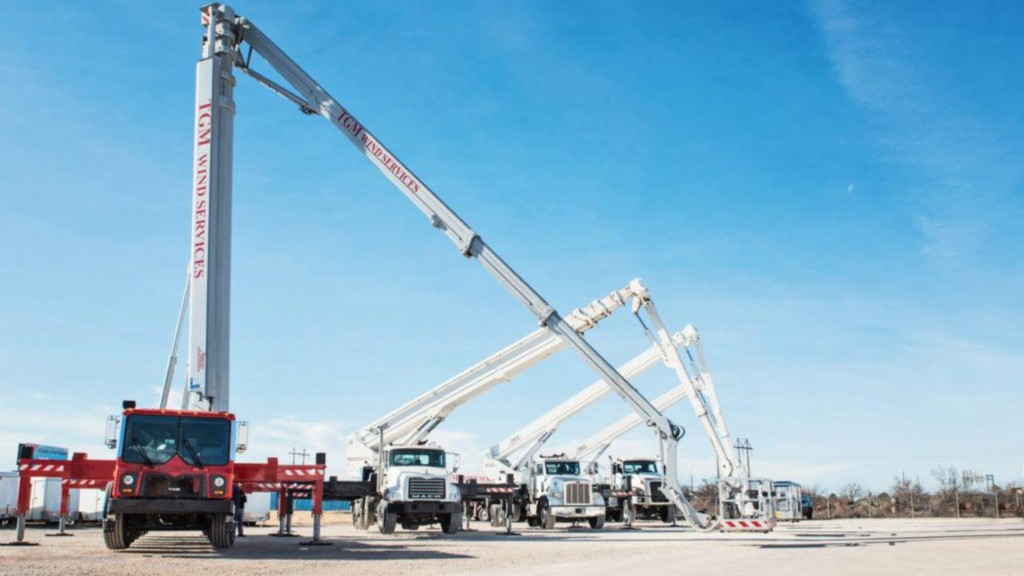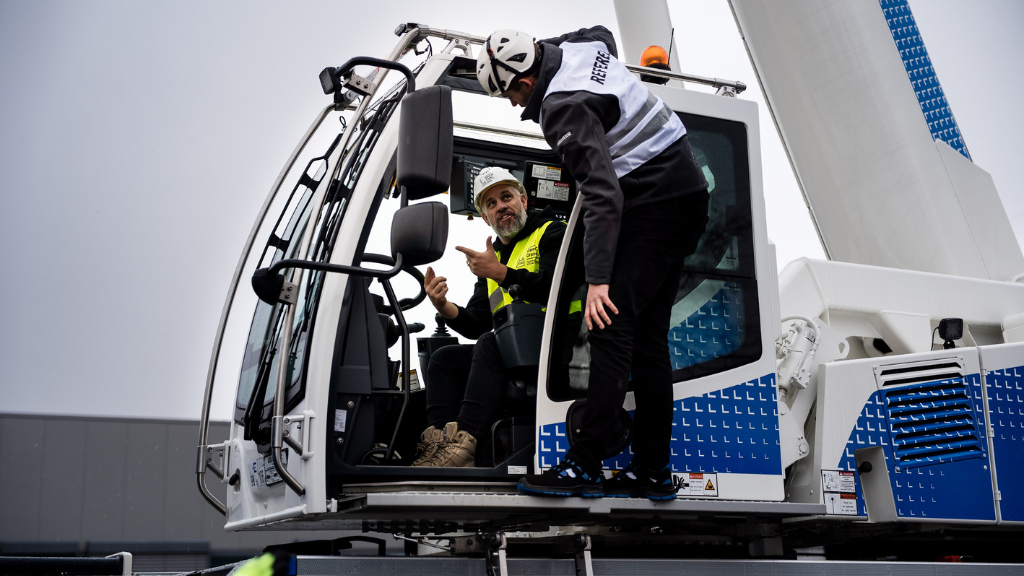Why utility contractors should consider truck-mounted aerial platforms instead of cranes for complex projects

While Cameron Mazzetta, project manager with M.J. Electric at its Glen Ellyn, Illinois, office, regularly deals with transmission line construction, these particular projects had sizable demands: Some of the work stretched across elevated expressways or dealt with soaring structures in congested metropolitan locations. The crews needed to get above 250 feet in extremely tight quarters. With those constraints, Mazzetta knew efficient equipment options for the utility contractor were limited.
M.J. Electric's projects span the nation, including transmission, substation, renewable energy, distribution, telecommunications, and other services.
In addition to its transmission line work, the Glen Ellyn office handles substation and distribution work, mostly for the main utility in the area, ComEd Exelon, with a fleet of bucket trucks, digger derricks, and cranes. Mazzetta, who also manages overhead line construction and general contracting bids, says one distinction M. J. Electric offers is services in energized high-voltage transmission work, as a byproduct of Quanta Services' energized training program, which brings an advantage over competitors.
"We have different technology and different equipment that other contractors just either don't have the capabilities to use and/or they don't have it," Mazzetta says.
Stretching the limits
Mazzetta says typically, M. J. Electric is familiar with setting structures anywhere from 75 feet to 250 feet and what it takes to do so. But work the company obtained in early 2019 pushed those boundaries.
"We got a couple big bids in where the transmission lines were going over either expressways or tollways, which obviously needed to be at such a great height to get up and over. Or we had structures that were in locations like cities where we, again, needed to go up and over bridges and stuff like that."
It was new territory for their office of M.J. Electric, Mazzetta said. "Some of these structures that we had been putting bids on had never really been seen on a ComEd utility yet. Some of the structures we set were of the tallest structures they have on system."
Inherently, this presented some challenges. "Our concern was, if we had to reach such heights to set these poles, how are we going to get up there?" he said. One of the proposed solutions involved using a crane, but Mazzetta says his crews weren't keen on that.
"The idea originally was we could use a fixed basket on a large crane. Unfortunately, it's just inefficient that way, because obviously with the crane, with all of its counterweights and having a fixed basket, it doesn't always lend to guys working faster. It's possible; it's just not preferred," he said.
When going through the bid process, Mazzetta sought to find other ways to tackle these jobs. He was aware of Bronto Skylift's truck-mounted aerial platforms, which he knew were used by some of M.J. Electric's other divisions, as well as internally at ComEd. They pointed Mazzetta in the direction of Kardie Equipment, based in Bee Cave, Texas, is one of the North American distributors for Bronto Skylift, offering platforms from 150 feet to 295 feet.
Other features on the models include integrated water, electricity, and air; 110 volts of electricity and 5/8 pneumatic airline inside the basket; 31 mph wind speed rating; all-steer axles and crab capability; voice-on-command intercom; battery backup operation; detachable material winch in the basket, and a manual emergency bleed-off system. The model is also ANSI A92.2 certified.
Smooth operation
Mazzetta said M. J. Electric also got two operators for the S295HLA models they rented from Kardie. Prior to starting their first project with them in February 2019, he said the distributor provided training for the crews that planned to go up in the basket to pilot the model.
Mazzetta said having experienced operators on what was new-to-them equipment was helpful for workflows. He said the operators would arrive at the site, spot the model, and do all the checks before uncradling the basket so the M.J. Electric crew members could get in and continue with operation.
"It's much nicer when you are renting a piece of equipment like that that they have people onsite," he said. "If something goes wrong or if there's some maintenance needed, I don't have to get necessarily worried about it or making sure I'm trucking somebody in for it. So it was nice that the Bronto operators themselves took care of everything for us."
The compact dimensions of the S295HLA, which runs 53 feet by 8.5 feet in transport mode with an outrigger footprint of 20 feet by 19 feet worked ideally in their projects' tight rights-of-way. At times, the sites were also bustling with multiple contractors shuffling various pieces of equipment.
"These projects weren't just in open farm fields," Mazzetta said. Compared to the crane M.J. Electric initially considered using for these projects, Mazzetta said the Bronto S295HLA definitely brought efficiencies due to its size and function.
"It's just nice that you don't have counterweights, you don't have the trailers that come with [a crane]. They're able to basically just set up and can move from side-to-side in the bucket. It's just a lot easier than having to work from one side, come down, strip the weight, and move it to the other side. It's just a lot more preferred and efficient for moving things around."
But he adds that even for jobs that don't carry the same space constraints, the S295HLA's footprint could help avoid challenges with easements or paying property owners for the use of their land. Another benefit compared to crane use was the articulation of the S295HLA's boom. "You can just bend and maneuver, which is more preferred to a fixed boom or a jib," he said.
Mazzetta said the first project lasted until the beginning of April, and then he says they transitioned seamlessly to the next project, which ran until the middle of May. Overall, feedback from the crews was positive.
"After getting the jobs done and polling the guys, they really did enjoy how easy they were to use and how easy they were to move around. It's much better than working out of a man basket," he said.
Though Mazzetta doesn't foresee M.J. Electric acquiring these types of specialized projects in the near future, he said he could see there may be instances to consider using a smaller Bronto model as opposed to a crane for some of their more consistent work, in order to simplify workflows and provide efficiencies for the crews.
"If it helps the guys and it's more efficient and it makes them happier and it fits within the budget, I certainly enjoyed using them," Mazzetta said. "It would definitely be something that I would go back to."



